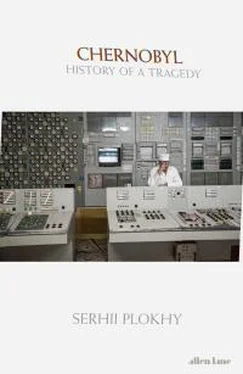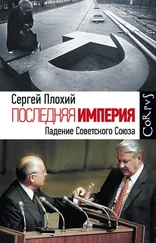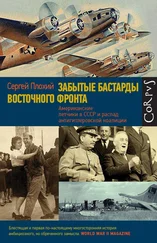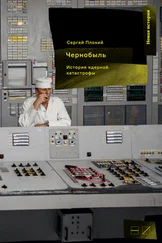In April 2016, when the world marked the thirtieth anniversary of the disaster, there was a temptation to breathe a sigh of relief. The half-life of cesium-137, one of the most harmful nuclides released during the accident, is approximately thirty years. It is the longest “living” isotope of cesium that can affect the human body through external exposure and ingestion. Other deadly isotopes present in the disaster have long passed their half-life stages: iodine-131 after eight days, and cesium-134 after two years. Cesium-137 is the last of that deadly trio of isotopes. But the harmful impact of the accident is still far from over. With tests revealing that the cesium-137 around Chernobyl is not decaying as quickly as predicted, scholars believe that the isotope will continue to harm the environment for at least 180 years—the time required for half the cesium to be eliminated from the affected areas by weathering and migration. Other radionuclides will perhaps remain in the region forever. The half-life of plutonium-239, traces of which were found as far away as Sweden, is 24,000 years. 22

Epilogue
These days, European tour operators offer trips to Chernobyl from Brussels, Amsterdam, or Berlin for under 500 euros. Visitors are promised safety, comfort, and excitement while visiting the place where on April 26, 1986, the explosion at reactor No. 4 ended one era and initiated another. The city of Prypiat and the exclusion zone as a whole is a time capsule.
In 2015, in the wake of the Revolution of Dignity, the Ukrainian parliament voted to remove statues of Vladimir Lenin and other communist leaders from the country’s streets and squares. Overnight, the exclusion zone became a communist preserve. The monument to Lenin still stands in the center of Chernobyl, and when the Ukrainian president visited the city on the thirtieth anniversary of the disaster, the authorities covered up a sign on the approach to the city that depicts the Order of Lenin. The sign is now painted in the Ukrainian national colors, blue and yellow. It was red back in 1986, when the entire Chernobyl nuclear plant was named after Vladimir Lenin. 1
The new high-tech shelter over the old sarcophagus of reactor No. 4 that visitors see on their trips to the exclusion zone stands today as a monument to the failed ideology and political system embodied in the Soviet Union. But it is also a warning to societies that put military or economic objectives above environmental and health concerns. In April and May 1986, the firefighters, scientists, engineers, workers, soldiers, and police officers who found themselves caught in the nuclear Armageddon called Chernobyl did their best to put out the nuclear inferno. Some of them sacrificed their lives, many their health and well-being, in this effort. They tried astounding measures. They dropped thousands of tonnes of sand from helicopters onto the open reactor. They dug a tunnel with little more than their bare hands to freeze the land beneath it. They built dams along the riverbanks to prevent contaminated water from flowing into the Prypiat River, and from there into the Dnieper, the Black Sea, the Mediterranean, and the Atlantic.
These measures achieved the seemingly impossible: they put the reactor to sleep. But even today we do not know which of the strategies the Soviets tried and the technical solutions they implemented actually worked. Could some of them have made things worse? The eruption of the nuclear volcano stopped for reasons that the scientists and engineers could not comprehend, just as they were initially at a loss to explain why the reactor had exploded in the first place. Although the reason for the explosion was eventually discovered, we are still as far from taming nuclear reactions as we were in 1986. Unpredictable events keep happening, causing new nuclear disasters, like the one at Fukushima, Japan, in March 2011, when not one reactor, as at Chernobyl, but three sustained a partial meltdown of their cores and released radiation directly into the Pacific Ocean as a result of an earthquake followed by a tsunami. 2
The world is growing bigger but not safer. The planet’s population was close to 5 billion in 1986; today it numbers more than 7 billion, and it is projected to reach 10 billion by 2050. Every twelve to fourteen years, the planet gains another billion residents. As the physical world shrinks for its growing population, its resources and energy reserves dwindle. As the population of Europe declines, and that of North America shows only modest growth, Asia and Africa are expected to show dramatic increases, with the African population more than doubling by mid-century, reaching a total of over 2 billion. Thus, most of the globe’s population growth will occur in countries already struggling to feed their hungry and replenish their sources of energy.
Nuclear power seems to provide an easy way out of the growing demographic, economic, and ecological crisis. Or does it? Most new reactors under construction today are being built outside the Western world, which is known for the relative safety of its reactors and operating procedures. A whopping twenty-one new reactors are under construction in China, plus nine in Russia, six in India, four in the United Arab Emirates, and two in Pakistan. Five new reactors are currently being built in the United States, and none in Britain. The next great nuclear-power frontier is Africa. Volatile Egypt is currently building two reactors—its first in history. Are we sure that all these reactors are sound, that safety procedures will be followed to the letter, and that the autocratic regimes running most of those countries will not sacrifice the safety of their people and the world as a whole to get extra energy and cash to build up their military, ensure rapid economic development, and try to head off public discontent? That is exactly what happened in the Soviet Union back in 1986.
The immediate cause of the Chernobyl accident was a turbine test that went wrong. But its deeper roots lay in the interaction between major flaws in the Soviet political system and major flaws in the nuclear industry. One such flaw at Chernobyl was the military origin of the nuclear power industry. Chernobyl-type reactors had been adapted from the technology that had been created to produce nuclear bombs. Moreover, although it was volatile under certain physical conditions, the Chernobyl-type reactor had been pronounced safe. It was actively promoted by leaders of the Soviet military-industrial complex, who later refused to take responsibility for the disaster. Another flaw was the violation of procedures and safety rules by station personnel, who bought into the myth of the safety of nuclear energy and adopted a reckless “we can do it no matter what” type of attitude. It was the same attitude that characterized the country’s desperate attempts to catch up with the West in the economic and military spheres. Immediately after the accident, as panic spread, the authoritarian Soviet regime imposed control over the flow of information, endangering millions of people at home and abroad and leading to innumerable cases of radiation poisoning that could otherwise have been avoided.
Today, the chances of another Chernobyl disaster taking place are increasing as nuclear-energy technology falls into the hands of rulers pursuing ambitious geopolitical goals and eager to accelerate economic development in order to overcome energy and demographic crises while paying lip service to ecological concerns. While world attention is focused on the nonproliferation of nuclear arms, an equally great danger looms from the mismanagement of “atoms for peace” in the developing world. The story of Chernobyl points to the need to strengthen international control over the construction and exploitation of nuclear power stations as well as to develop new nuclear technologies, such as those now being explored by Bill Gates and his TerraPower Company, to produce cheaper, safer, and ecologically cleaner reactors. Investment in such research and development, with the clear understanding that financial benefits may be years, if not decades, away, is imperative if the world is to survive the current energy crisis and the continuing demographic boom. 3
Читать дальше







![Сергей Плохий - Чернобыль - История ядерной катастрофы [litres]](/books/385171/sergej-plohij-chernobyl-istoriya-yadernoj-katastrof-thumb.webp)
![Сергей Плохий - Человек, стрелявший ядом [История одного шпиона времен холодной войны]](/books/405163/sergej-plohij-chelovek-strelyavshij-yadom-istoriya-od-thumb.webp)


![Сергей Плохий - Потерянное царство. Поход за имперским идеалом и сотворение русской нации [c 1470 года до наших дней]](/books/433093/sergej-plohij-poteryannoe-carstvo-pohod-za-impersk-thumb.webp)

